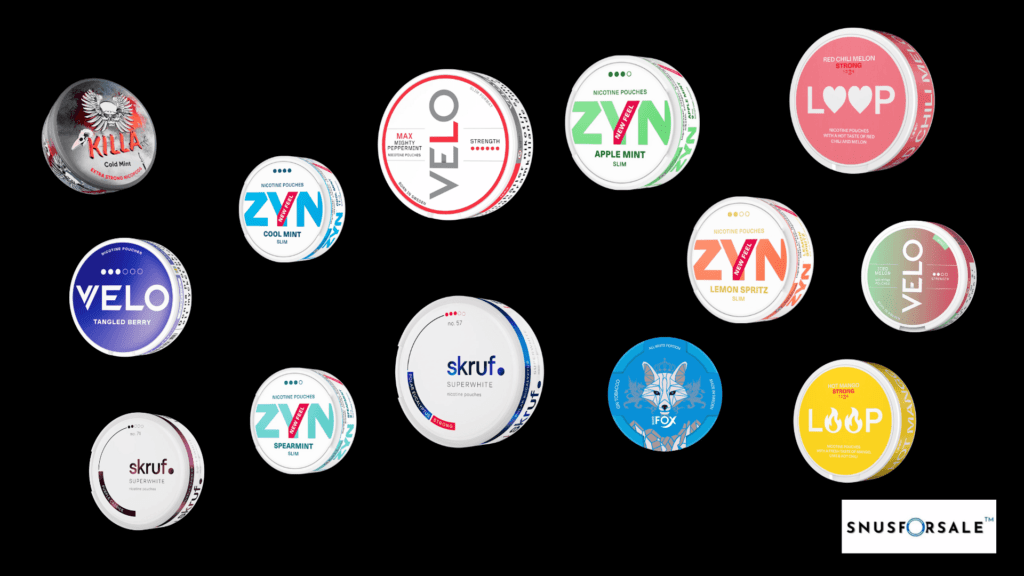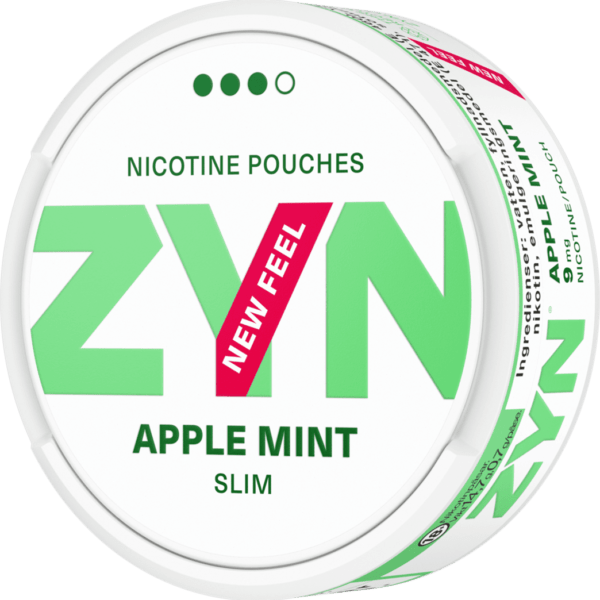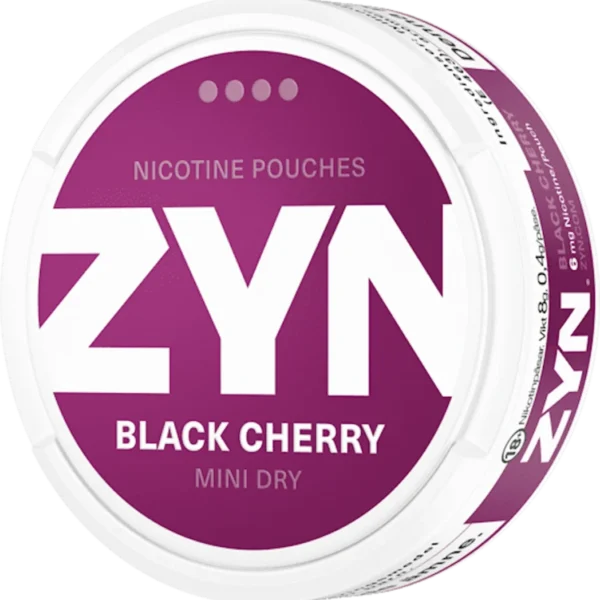Nicotine - All you need to know
Nicotine is a widely discussed topic. It is often brought up in discussions about snus and nicotine pouches, even though the harmful effects of tobacco combustion (smoking) are not related to nicotine itself.
Nicotine can be addictive. However, different nicotine products can lead to varying degrees of addiction. And nicotine itself does not cause cancer. Here, we have gathered answers to some of the most common questions about nicotine.
What is nicotine?
Nicotine is a substance naturally found in the tobacco plant. It acts as a defense mechanism for the plant, protecting it from insect attacks. Nicotine is classified as an alkaloid. Alkaloids are a group of substances found in plants that often have medicinal effects on animals and humans.
Other alkaloids include caffeine and morphine. The tobacco plant belongs to the nightshade family, and nicotine is also present in small amounts in other species of this plant family, such as tomatoes and potatoes. See below to find how much nicotine each fruit and vegetable contains.

How is nicotine absorbed by the body?
The four most common ways nicotine is absorbed by the body are through the mouth, lungs, skin, and the mucous membranes of the nose.
When using snus, nicotine is absorbed through the mucous membrane of the mouth and transported via the bloodstream to the brain. This means that nicotine from snus is absorbed more slowly compared to smoking.
The speed at which the body absorbs nicotine can also affect how addictive it is. Nicotine replacement therapies, such as nicotine patches or gum, like snus, have a slower absorption rate compared to smoking and are therefore less addictive.
Read more: Can you swallow ZYN spit
Popular VELO Nicotine pouches
Is nicotine dangerous?
Nicotine is not a health product, but it is not dangerous for most adults if consumed in moderate amounts. However, high doses can lead to side effects similar to those experienced with excessive caffeine intake, such as heart palpitations, tremors, and nausea.
Children and adolescents are particularly sensitive to nicotine and should therefore not use products containing this substance. This is why snus and other nicotine products have an age limit of 18 years.
Nicotine should also not be used by pregnant or breastfeeding women. Nicotine in the blood passes into breast milk and can affect the fetus’s growth as it influences blood circulation in the placenta.
It should also be avoided by people with various types of heart problems or those who have had circulatory issues in the brain.
Foods That Contain Nicotine
While it is well-known that tobacco products and nicotine pouches are rich in nicotine, many are unaware that certain everyday foods also contain this substance. Most of these foods belong to the Solanaceae family, commonly known as nightshades, which naturally produce nicotine. The nicotine content in these foods is typically measured in micrograms (µg), with one gram being equivalent to one million µg.
Eggplant (Aubergine)
Eggplant contains approximately 100 µg of nicotine per gram.
Potatoes
A typical potato has about 15 µg/gram of nicotine. However, ripened and green potatoes have higher levels, around 42 µg/gram. When mashed or pureed, the nicotine concentration can increase to roughly 52 µg/gram.
Tea
Both brewed and instant teas, including black and green varieties, can contain nicotine. The concentration ranges from 100 to 285 µg/gram.
Tomatoes
Regular tomatoes have about 7.1 µg/gram of nicotine. The nicotine content is higher in unripened tomatoes and decreases as they ripen.
Cauliflower
Although not part of the nightshade family, cauliflower still contains nicotine, at about 16.8 µg/gram.
Green Peppers
Green peppers, a popular vegetable, contain between 7.7 to 9.2 µg/gram of nicotine.
Seeking a more efficient way to get your nicotine fix?
Instead of consuming 14 kg of tomatoes every time you need a nicotine boost, consider using nicotine pouches! These pouches are tobacco-free, easy to use, convenient, and mess-free. Choose from a variety of brands that offer a wide range of strengths and flavors.

How does nicotine affect the body?
When nicotine is absorbed by the body, a number of neurotransmitters are released in the brain’s reward system.
For most nicotine users, this increases their sense of well-being. For many, nicotine also has both calming and stimulating effects. These feelings contribute to nicotine’s addictive properties.
Nicotine affects blood circulation, causing pulse and blood pressure to rise.
In low doses, nicotine has a stimulating effect on the nervous system, leading to increased alertness. In larger doses, nicotine has a depressant effect on the nervous system, making one feel more relaxed.
How long does nicotine stay in your system?
The duration nicotine remains in your system can vary based on several factors, including the amount used, frequency of use, and individual metabolic differences. Here is an overview of how nicotine is processed and eliminated from the body:
Absorption and Metabolism
When nicotine is consumed, it is rapidly absorbed into the bloodstream. The method of consumption (smoking, snus, patches, gum, etc.) affects how quickly nicotine enters the bloodstream. For instance, smoking leads to a quicker absorption compared to other methods.
Once in the bloodstream, nicotine travels to the liver, where it is metabolized into several compounds, the most significant of which is cotinine. Cotinine is used as a marker to measure nicotine levels because it remains in the body longer than nicotine itself.
Half-Life of Nicotine
The half-life of nicotine is approximately 2 hours. This means that every 2 hours, the concentration of nicotine in the blood decreases by half. For instance, if you consume a dose of nicotine, after 2 hours, half of that dose will be metabolized and eliminated from your bloodstream.
Detection Windows
- Blood: Nicotine can be detected in blood for 1-3 days after use, while cotinine can be detected for up to 10 days.
- Urine: In urine, nicotine can typically be detected for 3-4 days, and cotinine can be detected for up to 3 weeks for regular users.
- Saliva: Nicotine is detectable in saliva for 1-4 days after use, while cotinine can be detected for up to 7-10 days.
- Hair: Nicotine and cotinine can be detected in hair for up to 3 months, and in some cases, even longer, as hair retains traces of these substances over extended periods.
Factors Influencing Duration
Several factors influence how long nicotine stays in your system:
- Frequency and Amount of Use: Regular, heavy users of nicotine may have longer detection times compared to occasional users.
- Metabolism: Individuals with faster metabolic rates will process and eliminate nicotine more quickly.
- Age: Metabolic rate generally slows with age, potentially leading to longer detection times.
- Health Conditions: Liver and kidney function can affect how quickly nicotine and its metabolites are processed and excreted.
- Hydration and Diet: Staying hydrated and maintaining a healthy diet can aid in the elimination of nicotine.
Clearing Nicotine from the Body
To expedite the clearance of nicotine from your system, consider the following:
- Hydration: Drink plenty of water to help flush out nicotine and its metabolites.
- Healthy Diet: Eating a balanced diet rich in antioxidants can support your body’s detoxification processes.
- Physical Activity: Regular exercise can boost your metabolism, aiding in the faster elimination of nicotine.
- Avoiding Nicotine: The most effective way to clear nicotine from your system is to stop using all nicotine products.
Understanding how long nicotine stays in your system can help in planning to quit or preparing for medical tests. While the withdrawal phase can be challenging, the body will gradually rid itself of nicotine.
Read more: How to use nicotine pouches
Popular White Fox Nicotine pouches
How much nicotine is in snus?
Typically, it ranges from 0.8% up to 2.0% for “extra strong” varieties. There are also products on the market with even higher nicotine content. Nicotine cannot be added to snus because snus is considered a food product.
Previously, nicotine content was indicated as a percentage on snus cans, but after the EU Tobacco Directive was implemented in 2016, Swedish snus manufacturers are no longer allowed to display this information on the packaging.
Read about nicotine on wikipedia.
Nicotine withdrawal symptoms
When a person stops using nicotine, their body and brain need time to adjust to the absence of the substance. This adjustment period can lead to withdrawal symptoms, which vary in intensity and duration depending on the individual and their level of dependence. Common nicotine withdrawal symptoms include:
- Cravings: Intense urges to consume nicotine, which can be frequent and strong, especially in the first few days after quitting.
- Irritability and Mood Swings: Individuals may experience increased irritability, frustration, or mood swings as their body adapts to functioning without nicotine.
- Anxiety: Heightened feelings of anxiety or nervousness are common during the withdrawal period.
- Depression: Some people may experience feelings of sadness or depression, particularly if nicotine was used as a coping mechanism.
- Difficulty Concentrating: Reduced ability to concentrate or focus on tasks is a typical withdrawal symptom.
- Increased Appetite and Weight Gain: Many people find that they eat more when they quit nicotine, possibly as a way to cope with cravings or as a substitute for the oral fixation associated with smoking or using snus.
- Sleep Disturbances: Difficulty falling asleep, staying asleep, or experiencing vivid dreams can occur during nicotine withdrawal.
- Headaches: Some individuals report headaches as a withdrawal symptom.
- Restlessness: Feeling restless or fidgety is another common symptom of nicotine withdrawal.
These symptoms usually peak within the first few days to a week after quitting and gradually subside over the next few weeks. However, the intensity and duration can vary widely among individuals. It’s important to note that while withdrawal can be challenging, it is a temporary phase and a normal part of the process of overcoming nicotine dependence.















